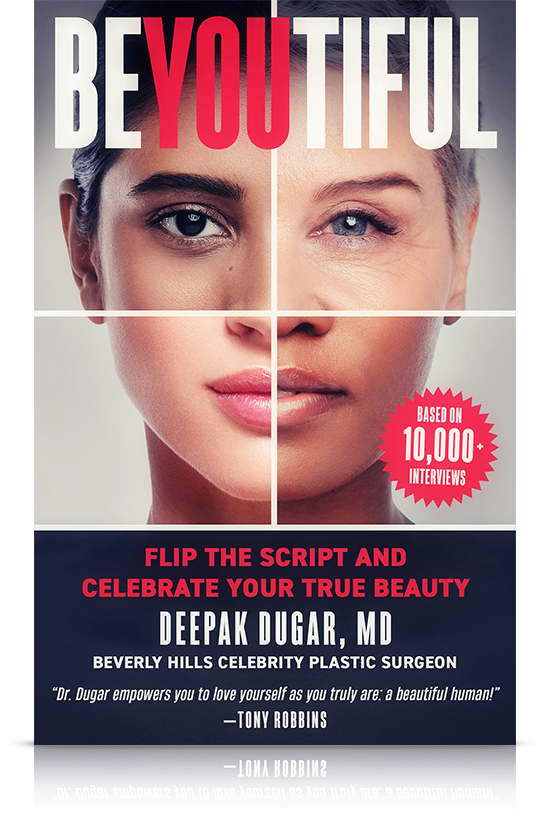If you’re over forty…and probably even over thirty!…I’ll bet you’ve bought an anti-aging product of some sort.
There are countless products at every end of the price spectrum that claim to erase wrinkles, lift sagging skin, or erase age spots that may or may not deliver what they promise.
Let’s bust a few myths around those products:
Myth 1: The more expensive, the better the anti-aging product.
The most expensive anti-wrinkle product I see on the market right now is called JK7 Rejuvenating Serum—$1,800 for one fluid ounce.
Its makers claim the benefits come from the “purest, most expensive essential oils (one of which costs up to $20,000 per liter) such as Jasmine, Rose, and Chamomile, signature extracts that cost about $50,000 per liter, plus natural based herbal liposomes, proteins, and peptides.”
According to the company website, “it promotes healthy cell growth from below your skin’s barrier, reduces wrinkle depth and supports your skin´s vital function by building a protective layer for your skin.”
That all sounds great, but remember—you are being sold.
All anti-aging products, no matter the price tag, have almost nothing to do with the biological aging process.
Myth 2: This product is scientifically proven to reduce the signs of aging.
A quick Google search reveals that just about every single product available to fight wrinkles makes a claim to be scientifically or clinically proven or backed by doctors.
Cosmetic giant L’Oreal got into trouble with the FTC by claiming clinically proven results with their Lancôme Génifique and L’Oréal Paris Youth Code skin care products.
The claims were not true. L’Oreal reached a settlement with the FTC that prohibits them from making claims in advertising that their facial skincare products target or boost the activity of genes to make skin look or act younger.
Myth 3: Collagen is the answer to fighting wrinkles.
New fads surface all the time when it comes to fighting the signs of aging. One of the newest is collagen. Many cosmetic brands have begun adding collagen to their creams, lotions, and serums.
Yet even the most basic study of skin anatomy shows that collagen is produced in the deeper level of the skin, called the dermis (which is below the epidermis), so it would be difficult for collagen applied topically to actually penetrate to where it might do any good.
Knowing this, plenty of companies focus on internal consumption of collagen via supplemental powders, liquids, or pills. Some studies have shown that ingesting collagen supplements may have beneficial effects on skin elasticity, but many of these studies are small and funded by the companies that make the product, increasing the opportunity for bias in the results.
Additionally, collagen is a large molecule, so absorption can be tricky. For a supplement to have a chance at being effective, it must be delivered in a smaller peptide format which can pass more easily through the intestinal barrier and into the bloodstream.
Myth 4: Anti-aging treatments at a doctor’s office are the most effective.
While it’s true that dermatologists, plastic surgeons, and some other specialists offer anti-aging treatments you cannot access outside of their office, even these solutions are limited in their effectiveness.
And remember—doctors profit from cosmetic procedures, so you are still being sold! (Hopefully, doctors do so with integrity.)
Botox injections last three to four months and cost $300 to $1,200 according to the need of the patient. Facial fillers last between six months and a year and run between $600 and $1,000 per syringe. The amount of filler used depends on the treatment area and your personal goals, but often three or four syringes are common in a treatment.
Laser treatment for wrinkles is longer-lasting, but also more costly. Different types of lasers achieve different results, some requiring longer recovery than others.
Facelifts are the longest-lasting option for reducing wrinkles and loss of elasticity in facial skin, but even they are not permanent. As with other procedures, there are different types of facelifts. The so-called lunch-hour facelift is not a true facelift procedure, but is popular for people who have only minimal sagging.
It has minimal recovery time because it only involves small cuts and sutures versus fully elevating the deeper tissues of the face in a full facelift. This mini-lift can cost between $3,500 and $8,000 and last upwards of two years.
A full facelift requires up to two weeks of recovery and will cost a minimum of $10,000 and up to $200,000. It is a more involved procedure including general anesthesia, so it is not to be taken lightly. In general, a full facelift will last approximately five to ten years before the skin begins to droop again.
The Bottom Line
Whether you’re trying to fight the signs of aging by investing in a lotion or a surgical procedure, remember this: nothing is going to stop your skin from aging in the long run.
You could spend tens of thousands of dollars and, in the end, you are still going to age.
At some point, it’s time to think about growing old gracefully and embracing the beauty that comes from a life well-lived.



